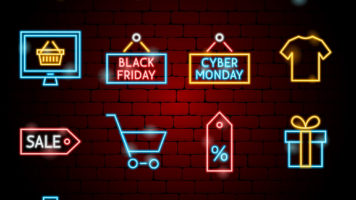Getting to the Inbox and Not Spam: Eleven Best Practices Every Email Marketer Should Follow
For some time we have been reporting about the deterioration we’ve seen in inbox performance. Take a look at the table below. It shows year-over-year email deliverability data for seven major retail categories we track, covering the December 1-25 period. “Inbox %” refers to the percentage of volume reaching the consumer’s inbox (as opposed to a spam folder) during that period. “%=>90%” shows the percentage of email campaigns achieving a 90% or greater deliverability.
[table id=15 /]
Some categories performed worse than others, but in every one you can see significant year-over-year erosion in both metrics. These trends reflect nothing more or less than lost business. And this during the most critical, intensely competitive selling period for every retailer.
The issues underlying these patterns are directly traceable to many marketers not following certain email sending best practices. Our concern for managing these issues prompted us last Fall to create a Deliverability Services team, headed by Tony Patti, our VP of Deliverability and Privacy Compliance. The function’s intent is to articulate clear best-practice operating standards, to work consultatively with clients to avoid inbox problems, and to rectify those that occur. This process can involve detailed client audits of key factors that affect email delivery, including:
[table id=16 /]
Putting audit findings into actual practice depends on the opportunities and risks uncovered by the particular audit. But there are certain best practices that we always recommend, especially those related to audience acquisition and contact.
Opt-In/Permission Best Practice
- Use an active, positive opt-in protocol in acquiring email subscribers to your commercial or marketing emails.
- Do not use any form of passive opt-in, in which the potential subscriber is automatically opted-in through some small print as part of a purchase transaction, with or without an option to uncheck an opt-in box, or to otherwise unsubscribe.
- We actively discourage the use of any purchased email lists, which in our experience tend to be expensive, unproductive, and a big source of spam complaints.
Importance of Welcome Emails
- Promptly acknowledge an opt-in, ideally with a Welcome email to the new subscriber, which arrives within minutes of the opt-in. The Welcome email should include a description of the type and frequency of messages to be sent, as well as clear opt-out procedures.
List Hygiene
- Address cleansing: All new email addresses should be subject to basic screening to ensure that they contain essential and valid elements. Your ESP will almost certainly perform this service.
- Periodic Email Change of Address (ECOA) Processing: A significant percentage of email addresses become undeliverable every year. The main reason is that your subscribers change their email addresses and fail to notify you. You may see this happening through the emails that ‘bounce’ or become longtime open/click inactives. FreshAddress can find current email addresses for some percentage of these. They will then send out a Permission Message to the updated email addresses, to ensure deliverability and permission. This message includes an email change of address link, permitting the capture of the customers’ current preferred email address.
- Facilitating subscriber email change of address: Your website and emails should contain clear indication of how a subscriber can change an email address. A significant number of email opt-outs are merely trying to change their email addresses. During the opt-out process, ask the subscriber if s/he’s actually trying to change the email address, and if so, divert to that process instead.
Engagement Screening
- Don’t email any customer who hasn’t opened/clicked your emails and/or browsed your website in the past 90-180 days, and/bought in the past twelve months.
- Consider re-opt-in/reactivation programs for inactives (however defined). In these, the targeted email/purchase inactive subscriber is acknowledged as such, and asked if s/he wishes to continue receiving your email.
Relevance
- A large driver of spam complaints and email opt-outs are customers receiving email they’re not interested in. Mass mailing (“batch and blast”) email is a considerable source of this issue. A subscriber is much more likely to accept and engage with an email if it is relevant; that is, targeted to likely customer interests, based on data reflecting customer location, status and behavior.
Frequency Optimization
- Over-mailing is another source of email spam complaints and opt-outs. How much is “too much” is a matter for testing different frequency cadences across various customer engagement segments. In the absence of test data, we believe that subscribers that receive more than four promotional or marketing email messages per week from a single mailer may be at risk.









